Sony DSC-V3By: Shawn Barnett and Dave Etchells(none) <<DSC-V3 Sample Images :(Previous) | (Next): Print-Friendly Review Version>> DSC-V3 Imatest ResultsReview First Posted: 09/09/2004, Updated: 11/30/2004 |
Detailed analysis of the Sony DSC-V3 images, from Imatest(tm)
I've recently begun using Norman Koren's excellent "Imatest" analysis program for quantitative, thoroughly objective analysis of digicam test images. I highly commend it to our technically-oriented readers, as it's far and away the best, most comprehensive analysis program I've found to date. (And with an introductory price of only $59, it's hard to beat.)
My comments below are just brief observations of what I see in the Imatest results. A full discussion of all the data Imatest produces is really beyond the scope of this review: Visit the Imatest web site for a full discussion of what the program measures, how it performs its computations, and how to interpret its output.
Here's some of the results produced by Imatest for the Sony DSC-V3:
Color Accuracy
The Sony DSC-V3 really likes bright greens and reds, it boosts saturation on them quite a bit more than it does other colors (and more than it does more subdued tints of red and green). Apart from its enthusiasm for bright reds and greens though, its colors are fairly accurate, although it does show a slight shift of some blues toward cyan. On average, color saturation of swatches on the MacBeth ColorChecker(tm) chart are 113.1% of their ideal values. (An average oversaturation of 13.1%.)
Color Analysis
These images show the color behavior of the DSC-V3 directly. In each color swatch, the outer perimeter shows the color as actually captured by the camera, the inner square shows the color after correcting for the luminance of the photographed chart (as determined by a 2nd-order curve fit to the values of the gray swatches), and the small rectangle inside the inner square shows what the color should actually be, based on perfect rendering to the sRGB color spacer. From this plot, we can see the V3's tendency to significantly brighten highly-saturated colors. (Apart from reds and greens, it increases brightness, while leaving saturation more or less alone.) Some of this is simply a side-effect of the V3's rather contrasty tone curve.
Gray Patch Tone and Noise Analysis
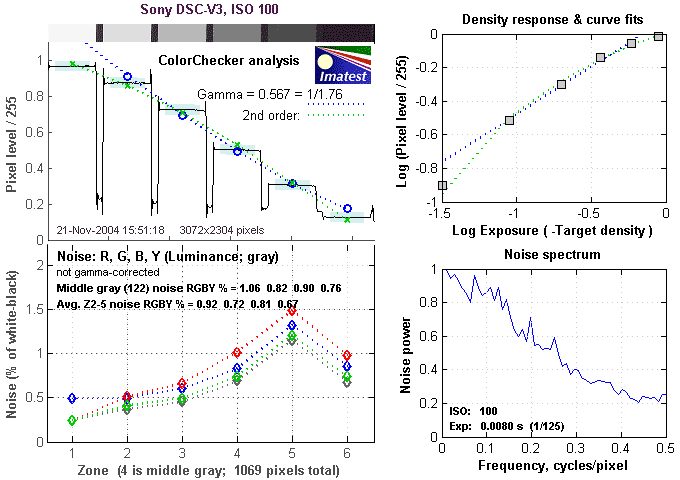
There's a lot in this particular graph, a lot more than I have room to go into here. Bottom line, the Sony DSC-V3's noise levels are right in line with those of the best competing 7-megapixel cameras, with a nice, fine-grained character.
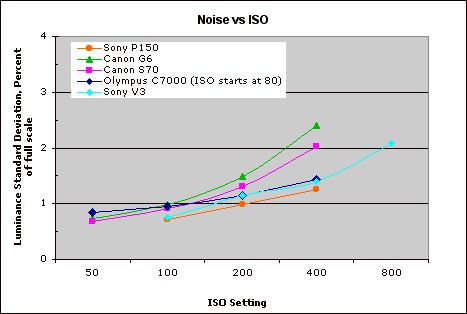
This chart compares the DSC-V3's noise performance over a range of ISOs against that of competing cameras. As you can see, the Sony DSC-V3 and Olympus C-7000 have very similar performance, the Sony DSC-P150 coming in just a hair lower. Despite the low noise levels in its images, the V3 does a pretty good job of maintaining subject detail in areas of subtle contrast. An excellent performance overall.
The chart above shows consolidated results from spatial frequency response measurements in both the horizontal and vertical axes. The "MTF 50" numbers tend to correlate best with visual perceptions of sharpness, so those are what I focus on here. The uncorrected resolution figures are 1548 line widths per picture height in the horizontal direction (corresponding to the vertically-oriented edge), and 1331 along the vertical axis (corresponding to the horizontally-oriented edge), for a combined average of 1440 LW/PH. Correcting to a "standardized" sharpening with a one-pixel radius increases this number slightly, to an average of 1321 LW/PH, a good number, but one that's somewhat below the best of its 7-megapixel competition.
For the real techno-geeks, the two plots below show the actual edge response of the DSC-V3, for horizontal and vertical edge. What's interesting in these plots is the extent to which the V3's over-sharpening is apparent along the horizontal axis (corresponding to vertically oriented edges). - Although as noted in the main review, this oversharpening is much more apparent on artificial subjects like the res target than it is on natural objects.
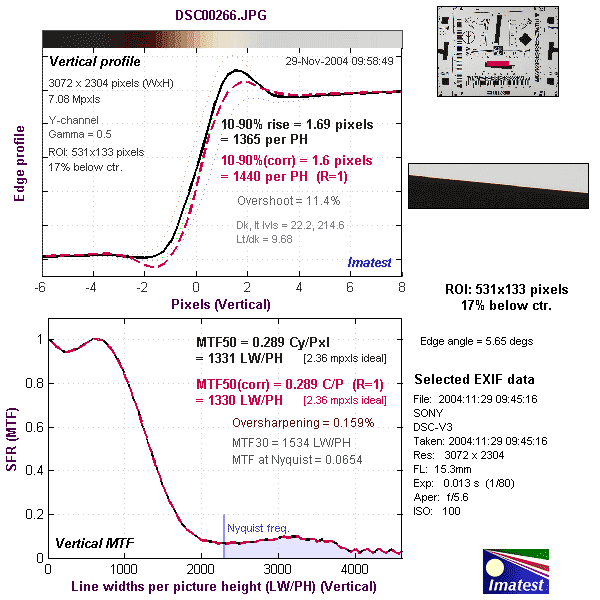
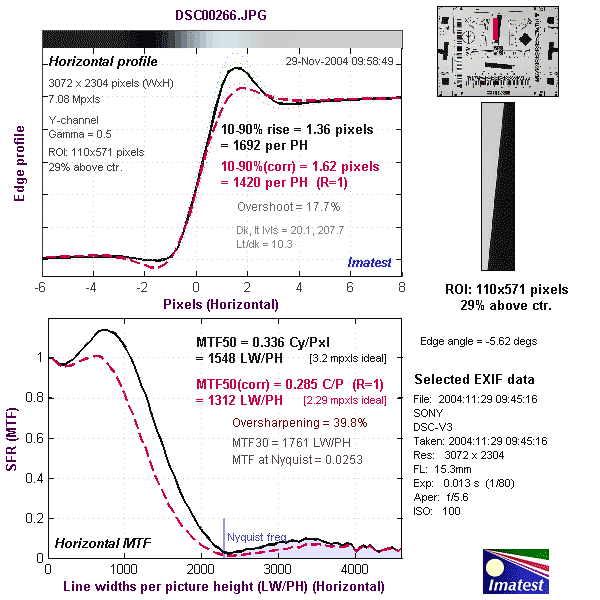
Reader Comments! --> Visit our discussion forum for the Sony DSC-V3!
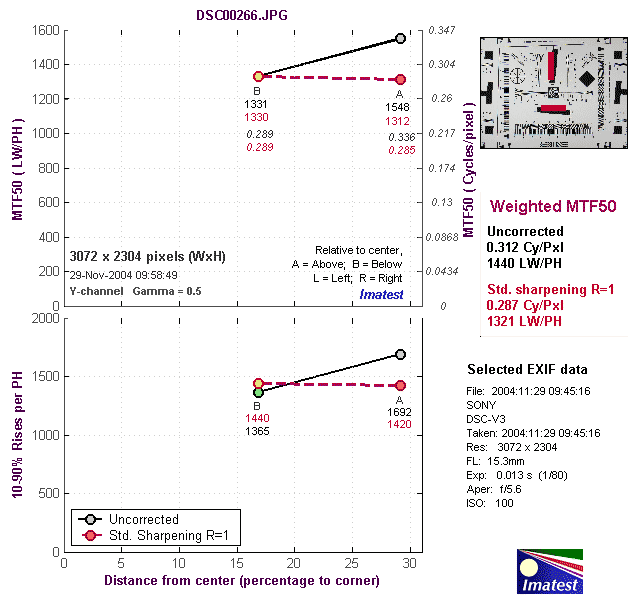

Follow Imaging Resource: